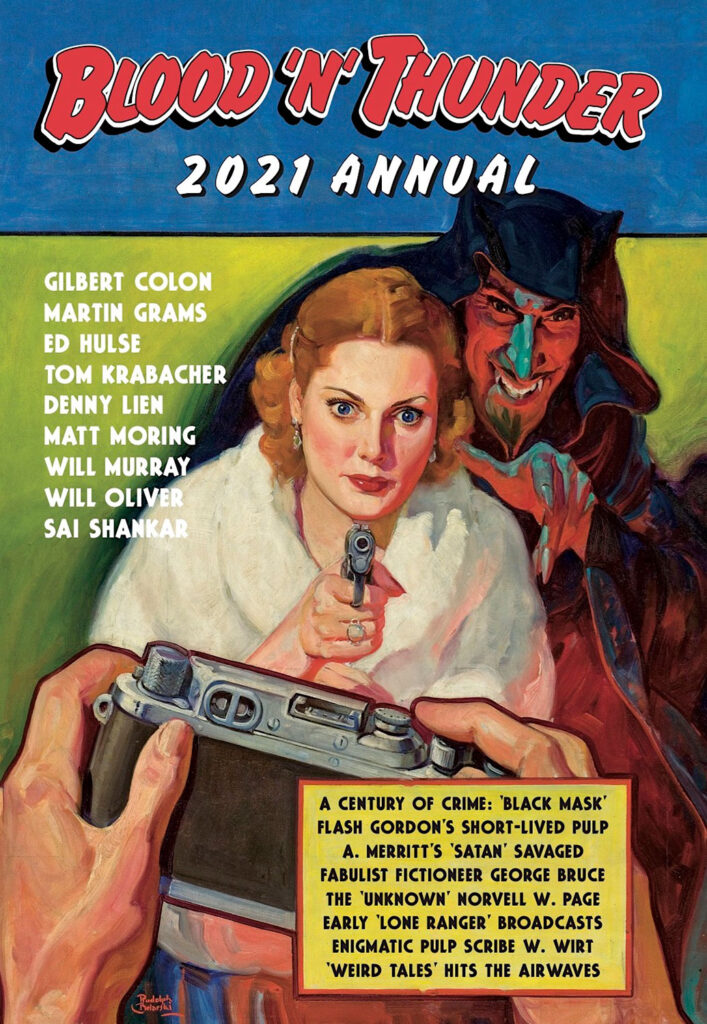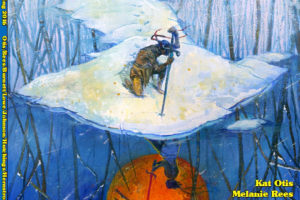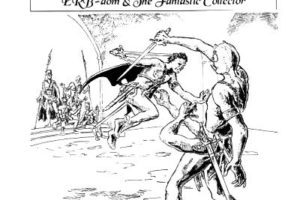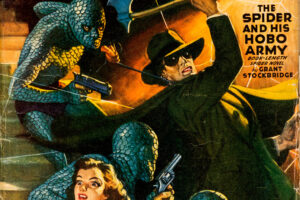 This came out to coincide with Pulpfest 2021. I was recently bemoaning the fact we hadn’t seen a new issue in awhile. The editorial explains what happened, as well as provides introductions to the authors and their works. As always, this is an excellent issue.
This came out to coincide with Pulpfest 2021. I was recently bemoaning the fact we hadn’t seen a new issue in awhile. The editorial explains what happened, as well as provides introductions to the authors and their works. As always, this is an excellent issue.
For pulps, we first off get a tribute to the legendary pulp Black Mask, which had its 100th anniversary recently. While not intended to be only a detective pulp, it mainly focused on this area and was a leader, giving us the “hard-boiled” detective and many detective series under the editorship of Joseph T. “Cap” Shaw. This section is a reprint and expansion/revision of the section on Black Mask from The Blood ‘n’ Thunder Guide to Pulp Fiction by editor/publisher Ed Hulse at Murania Press.
In addition, we get a couple of reprints from Writer’s Digest. First is an analysis of the July 1929 issue by literary agent August Lenniger taken from October 1929, and a piece from 1934 by “Cap” Shaw giving advice to would-be pulp writers. This work is pretty interesting in making clear the differences between popular fiction and literature.
Prolific pulp historian Will Murray gives a great overview of writer George Bruce. As he mainly wrote in the aviation pulps, I’m not that familiar with him. Like several other pulp authors, he was able to make the move from pulps to Hollywood screenwriter (both movies and TV), leaving behind the pulps. Plus he seems to give an exagurated background on himself. And during his time in the pulps, he was even able to get pulps out with his name on them, something almost no one else did. Whatever happened to the American Fiction Guild?
Norvell W. Page is best known for The Spider and various similar pulp works. But Tom Krabacher discusses his trio of fantasy-adventure novels from Unknown. I had heard of the Prester John works, and hoped someone would bring them back in print, but now I don’t know.
From Denny Lien, we get a detailed look at the 1936 pulp featuring Flash Gordon. I had posted on this pulp, one of a handful from Harold Hersey that adapted comic strip characters to the pulps. We get a full look at both the Flash Gordon story, as well as the others. So you don’t have to.
Gilbert Colon gives us a look at a filmed versions of H. P. Lovecraft’s “Dreams in the Witch-House,” contrasting it to the written version. And discussed why some of the changes were probably made.
I have been reading and reviewing the works of “W. Wirt” who did the long Jimmie Cordie series along with the Captain Norcross series. But I was curious as to who this was, as his autobio seems a bit much. Steeger Books publisher Matt Moring has figured out who this is and gives the full story. I know in the Complete Jimmie Cordie volume this is also revealed, but I don’t now if this is the same piece. Also given is a three-page bibliography of his pulp output. I would have like if his different series has been noted.
From Sai Shanker, who writes the blog Pulp Flakes, we get a history of the Butterick Company. This company published dress-patterns and women’s magazines, and also bought Ridgway, which published Adventure, Romance, and Everybody’s magazines. This should be read alongside his article on Everybody’s that appears in The Pulpster #30. Apparently he will be putting out “best of” anthologies from Everybody’s, though I have no idea from whom.
For old-time radio, we get an examination of an attempted Weird Tales radio show — which would have adapted stories from the pulp and served as a means of promoting it — as well as a later attempt at this, The Witch’s Tale. This piece is by Will Oliver.
And there’s a lengthy excerpt from the new book by Martin Grams and Terry Salomonson on the creation and early development of the Lone Ranger radio program. The Long Ranger — along with The Green Hornet and Sgt. Preston of the Yukon — was developed at the WXYZ in Detroit. You can learn more about the history of this important station from Dick Osgood‘s WYXIE Wonderland, recently reprinted by Bold Venture Press. In reading WYXIE, as well as this article, the credit of creating The Long Ranger has long been unclear. Author Fran Striker, who wrote the radio show, along with the pulps and books, should be given credit, but station owner George Trendle seemed to insist on taking full credit. This piece gives further evidence of who should get credit. It’s part of a multi-volume series on the Lone Ranger show.
For movies and movie serials, we get a trio of pieces by Ed Hulse. First is on the 1929 film adaptation of A. Merritt’s Seven Footprints to Satan, which turned the pulp adventure/mystery story into a comedy-horror movie that actualy hurt book sales. Next is on the 1943 Republic serial Secret Service in Darkest Africa, which turned a possible Tarzan-inspired movie into an action-adventure series fighing Nazis, and a kind-of sequel to G-Men vs. The Black Dragon. And finally, there’s a long piece looking at the early career of “B”-movie director George Sherman.
This issue’s fiction reprint is Robert E. Howard‘s “Mountain Man,” the 1934 first installment in his humorous western short-story series featuring Breckinridge Elkins.
It’s another excellent issue. As always, I recommend this issue and the prior volumes to everyone’s attention. These should be on the shelves of anyone interested in pulps and other popular fiction of the 20th century. I hope we will get another issue more often, even if it’s just annually.



